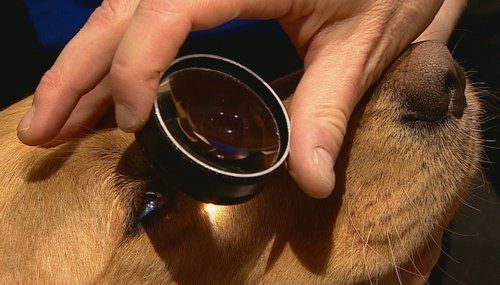Corneal Dystrophy in Dogs
Overview
Corneal dystrophy is a congenital, progressive condition that falls into three categories: stromal corneal dystrophy, epithelial corneal dystrophy, and endothelial corneal dystrophy. The category describes which part of the cornea is affected.
Veterinary researchers believe that all three types of corneal dystrophy in dogs are inherited from parents. At this time, though, no one knows which gene causes the disorder.
Corneal dystrophy tends to affect certain breeds of dog, including Huskies, Boston Terriers, Chihuahuas, and Dachshunds.
Common Symptoms of Corneal Dystrophy in Dogs
Corneal dystrophy in dogs doesn’t always cause vision problems. Over time, though, symptoms tend to worsen. Under normal conditions, the cornea is a clear layer of the eye that focuses light and protects the rest of the eye from potentially harmful elements, including dust, dirt, and pollution.
Corneal dystrophy in dogs causes the cornea to accumulate cholesterol deposits that make the transparent layer hazy. Typically, the disease progresses in both eyes at the same time.
Other symptoms of corneal dystrophy in dogs can include:
- Eye spasms
- Eye pain (often expressed by pawing at the eyes)
- Light sensitivity
- Dry or watery eyes
Many of these symptoms also occur in humans with corneal dystrophy. Of course, it’s easier for human beings to describe their discomfort. Over time, dogs may show signs of impaired vision, such as bumping into walls or getting confused in new environments.
Diagnosing Corneal Dystrophy in Dogs
Owners who notice changes in their dogs’ behavior or eyes should contact a veterinarian with experience performing eye exams. The veterinarian will examine the dog’s eyes for signs of accumulating cholesterol deposits.
Diagnosing corneal dystrophy may require more than one examination. After several exams, the veterinarian can determine whether deposits are increasing in the cornea.
Treatment Options for Corneal Dystrophy in Dogs
In most cases, treatment isn’t necessary for corneal dystrophy in dogs. Treatments become more appealing, though, when the dog experiences significantly impaired vision. This may not happen for years after the initial diagnosis.
The only treatment option for corneal dystrophy involves surgery. A veterinarian will need to remove the deposited cholesterol from the dog’s corneas. It’s a successful approach, but only recommended when necessary since the surgery involves general anesthesia. Also, many dogs show discomfort and anxiety while recovering from corneal surgery.
Related Content



















